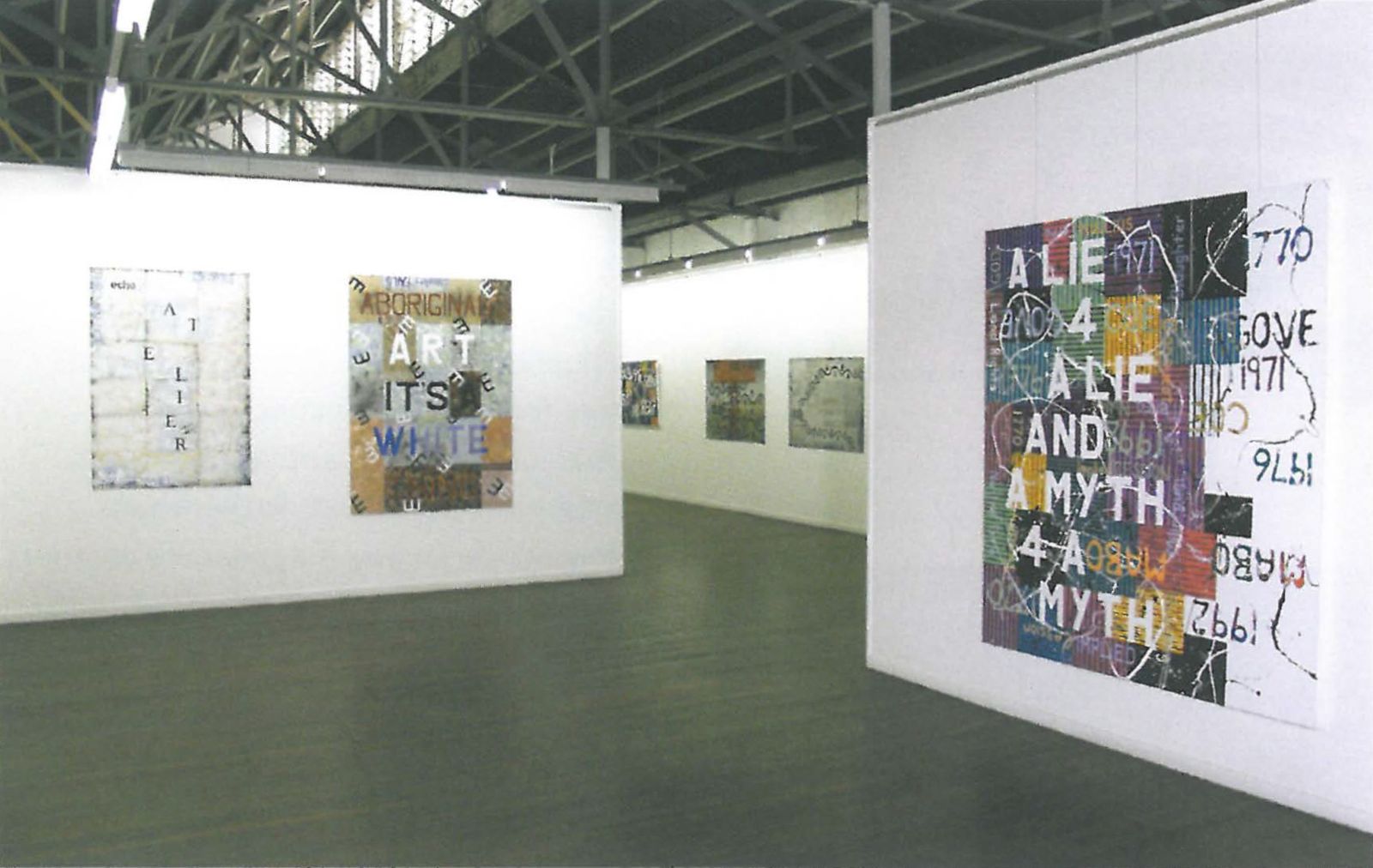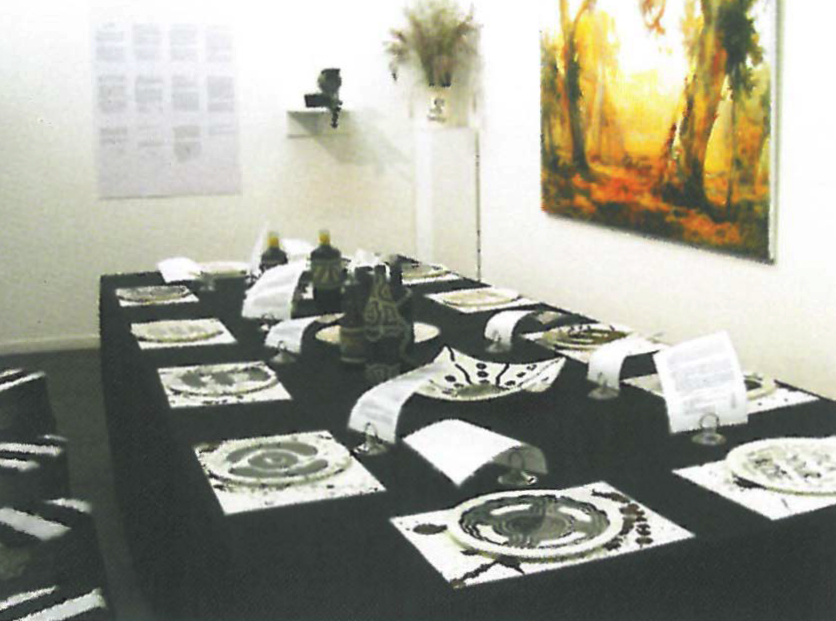
The exhibition Discomfort: relationships within Aboriginal art held at Fireworks Gallery in Brisbane featured the works of a stellar line-up of four Australian artists, Michael Nelson Jagamara, Richard Bell, the late Emily Kame Kngwarreye and Imants Tillers.
The idea of the show was that it was essentially a three-way discussion point, not a debate, but a tribute, about the prickly issues of appropriation, collaboration, exploitation, problems of black and white issues and the grey areas in between. While the show sought to promote the work of all four artists, the major focus was on urban artists Richard Bell and Imants Tillers. Remote Indigenous artist Michael Nelson Jagamara and Emily Kame Kngwarreye appeared to be mainly reference points to the work of Bell and Tillers.
As outlined by Michael Eather in his curatorial statement, each artist is represented by their own highly developed system of visual communication that explains a world of abstraction in social, political and cultural structure in three main areas:
• The Remote Australian Aboriginal (in this situation Central Australia) and arguably the most mystical for the European
• The high end of Australian Art and critical debate and arguably the most intellectual
• The role of the displaced. Aboriginal people who too often cannot be accommodated as mystical or intellectually relevant, and who refuse to go away.
The exhibition went some way towards exploring these ideas, even if it appeared to be at a superficial level. There was a sense that the show, while powerful, did not quite hang together comfortably. Discomfort indeed. For example, the artists involved are worlds apart in terms of their individual and intellectual perspectives on the range of issues portrayed. The principal connection point between these artists was in collaborations or the appropriation of other artists' work. While it was easy to see the connection between the male artists, it was difficult to see where Emily fitted into the show other than on a commercial basis. Bell puts forward the idea in his paper titled Bell's Theorem that 'Aboriginal art: it's a white thing' - an entity which he says is manipulated and controlled by forces outside Aboriginal culture and not always to the advantage of Aboriginal people. His work has changed and matured over time but has always been gutsy, challenging and attention-seeking. He addresses a range of issues in his work from racism to the exploitation of Aboriginal art and its industry. Imants Tillers is a well-known appropriator and collaborator who has worked with a number of noted artists including Christo and Michael Nelson Jagamara. Being less familiar with the work of Tillers I was initially unimpressed with his offerings in this show. However, I have since discovered that he is an artist of formidable talents. His work is both intriguing and subtly evocative. The only issue I have with his work is on moral and ethical grounds. The highlight of the show was Bell's intellectual mugging of Tillers with his version of Untitled 1978. Tillers' version was lost or accidentally destroyed by the National Gallery of Australia.

Aboriginal artists who collaborate risk incurring the wrath of their community. Because of the cultural content and the protection of the rights of Indigenous peoples collaboration and appropriation is often viewed with distrust. This is something that is of Discomfort to Aboriginal people in the protection of their cultural heritage.
Collaboration is a vexed issue for all artists and often benefits one over the other. There are those who would say that it is an individual decision to be negotiated between artists. What is important to consider in black and white collaborations is who decides what is to be shared and who is responsible when cultural boundaries are crossed? At the end of the day responsibility for anything that goes wrong is left with Aboriginal people.
An elaborate self-parody on the part of the Campfire Group was an installation titled 'Guess Who's Coming to Dinner': a table set for a meal surrounded by Bell's manifesto, the Hans Heysen/Tillers Untitled 78 (in turn appropriated by Richard Bell), log seats covered in fake fur, an axe and a Namatjira-style watercolour. It was also a satirical shot at those who feel they have some kind of an axe to grind around issues referred to in the show.
However, there were far too many focus points in the exhibition especially given the line up of artists included which made it a little overwhelming.












